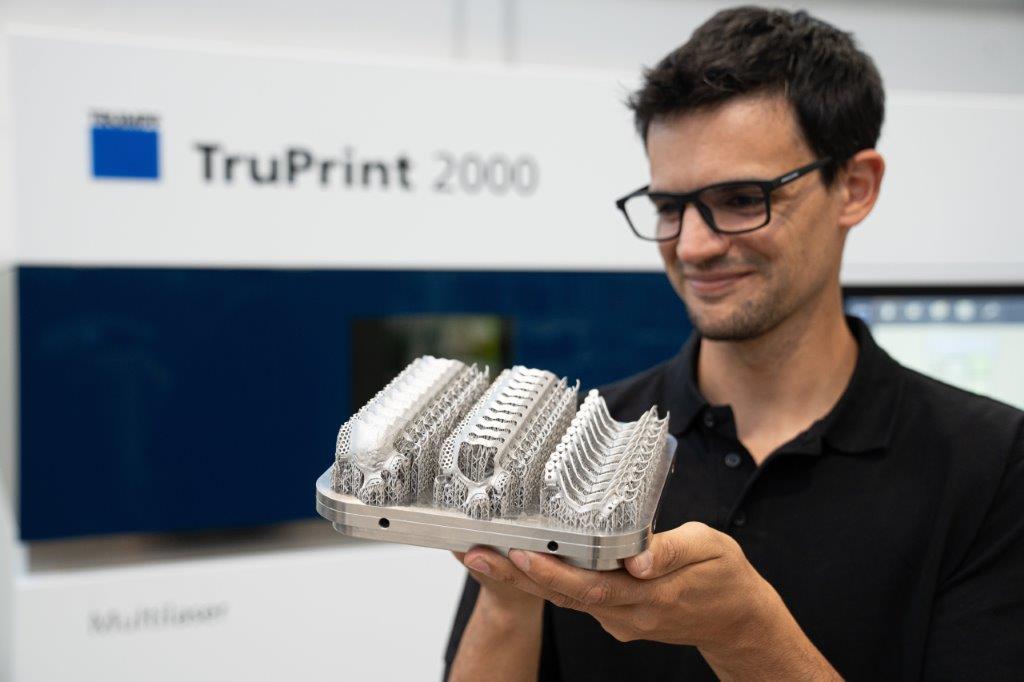TRUMPF Leads the Way in Cost-Effective Additive Manufacturing
Ditzingen/Frankfurt, Germany – TRUMPF enables cost-effective and sustainable mass production with its 3D printers. In many cases, the high-tech company uses the systems for its own sustainable production of series parts.
“Additive manufacturing beats all conventional manufacturing methods in terms of cost and carbon footprint for some of our components. One example is the production of engine coolers built into cutting units of the TruLaser 5030. We save costs and have been able to reduce CO2 emissions per part produced by 83 percent compared to a conventionally manufactured assembly,” states Richard Bannmüller, CEO, TRUMPF Laser and System Technology. At the high-tech company, 3D printers run 24 hours a day, seven days a week. 3D printing experts at TRUMPF help other departments identify and develop 3D printed series components.
TRUMPF 3D printers are used in many industries
3D printing plays out its advantages in the dental industry, medical technology, tool and mold making, and aerospace, among others. “We are the technology and market leader in 3D printers for the dental industry. We want to further expand this position,” says Bannmüller. To that end, TRUMPF is launching the new TruPrint 2000, which will celebrate its world premiere at Formnext in Frankfurt. With its up-to-500-watt laser and square build plate, the machine is designed for mass production, such as dental prostheses.
“It is now impossible to imagine the aerospace industry without additive manufacturing of series parts. Our customer Airbus, for example, uses additive manufacturing to produce components for passenger planes and helicopters,” says Bannmüller. The series parts are particularly light and, at the same time, very stable. They therefore meet high quality standards in aviation. Tool and mold making also benefit from 3D printing. Designers can rethink the design of components in additive manufacturing and print geometries that cannot be implemented in other ways, such as internal cooling channels for their tools. “Other industries are also discovering more and more the potential of 3D printing. One example is additive manufacturing of bicycle parts,” he asserts. Manufacturers can use 3D printers to produce brake levers made of titanium, for example. Additive manufacturing is what makes the cost-effective processing of this material possible in the first place.
TRUMPF brings mechanical engineering expertise to additive manufacturing
TRUMPF brings decades of mechanical engineering and laser expertise to additive manufacturing. “Our robust systems deliver repeatable results, making them particularly suitable for industrial use. This is where our experience as a machine builder and laser specialist comes in handy. The laser, together with its optics and sensor technology, is crucial for productive additive manufacturing,” says Bannmüller. Among other things, the high-tech company uses its own laser sources in its 3D printers.
Image Source: TRUMPF





 Facebook
Facebook.png) Twitter
Twitter Linkedin
Linkedin Subscribe
Subscribe